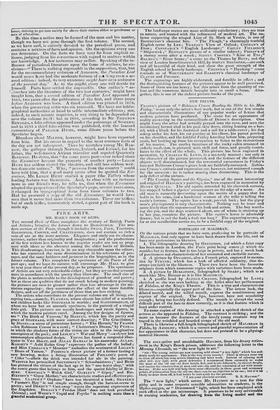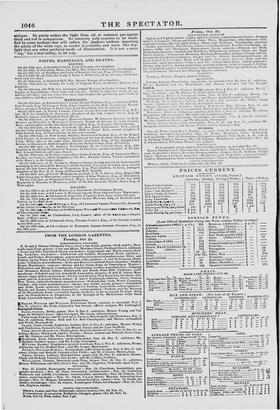The ever-active and unsubduable HAYDON, from his dreary retire- ment
in the King's Bench prison, addresses the following letter to the Morning Chronicle, on "the new light in art." "Sir—The young artists are now running a lid about "a new light," which has sud- denly made its appearance. This is the way every season I There is always some toy to draw olT attention tram severe thinking and hard work. Instead of running mad after this new tight, with great deference I recommend them earnestly to make the most of the ntd one—to draw hands, feet, and diligently, to dissect deeply., and master the construction of men and allill als, and the comwaion of art with manu- factore. If the new light will help them more effectually in these great and necessary points of reformation that, the old Gne, there can be no objection to its use; but Hit be likely to draw them Off, it had better be laid aside for the present. " I am your obedient servant, B. It. iiAroom."
The " new light," which serves Mr. HAvooN as a text for this pithy and in some respects sensible admonition to students, is the Hydro-oxygen, or" Drummond " light, which has been employed with such effect in the gas microscope. It promises to be very serviceable in evening academies, for drawing from the living model and the
antique. Its purity makes the light from oil or common gas appear thick and red in comparison. Its intensity only requires to be modi- fied by some medium that will soften the shadows without impairing the purity of the white rays, to render it available, and more like day- light than any other artificial mode of illumination. It is not a mere "toy," but a real utility, in its way.



























 Previous page
Previous page